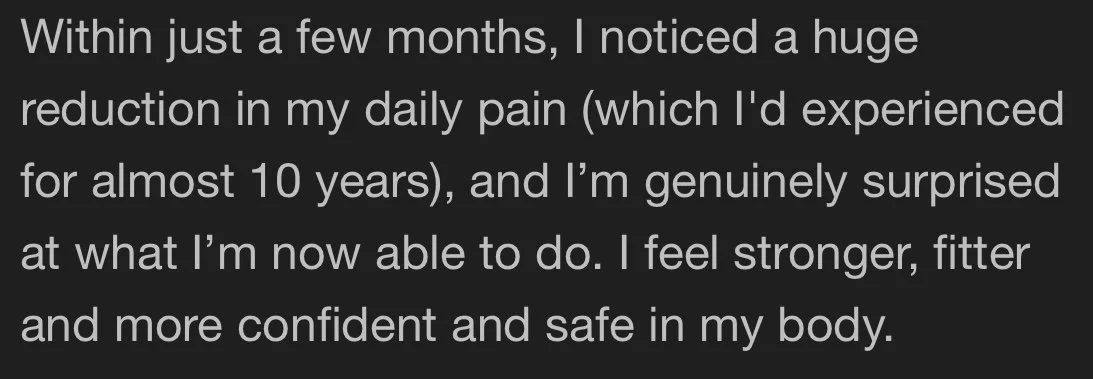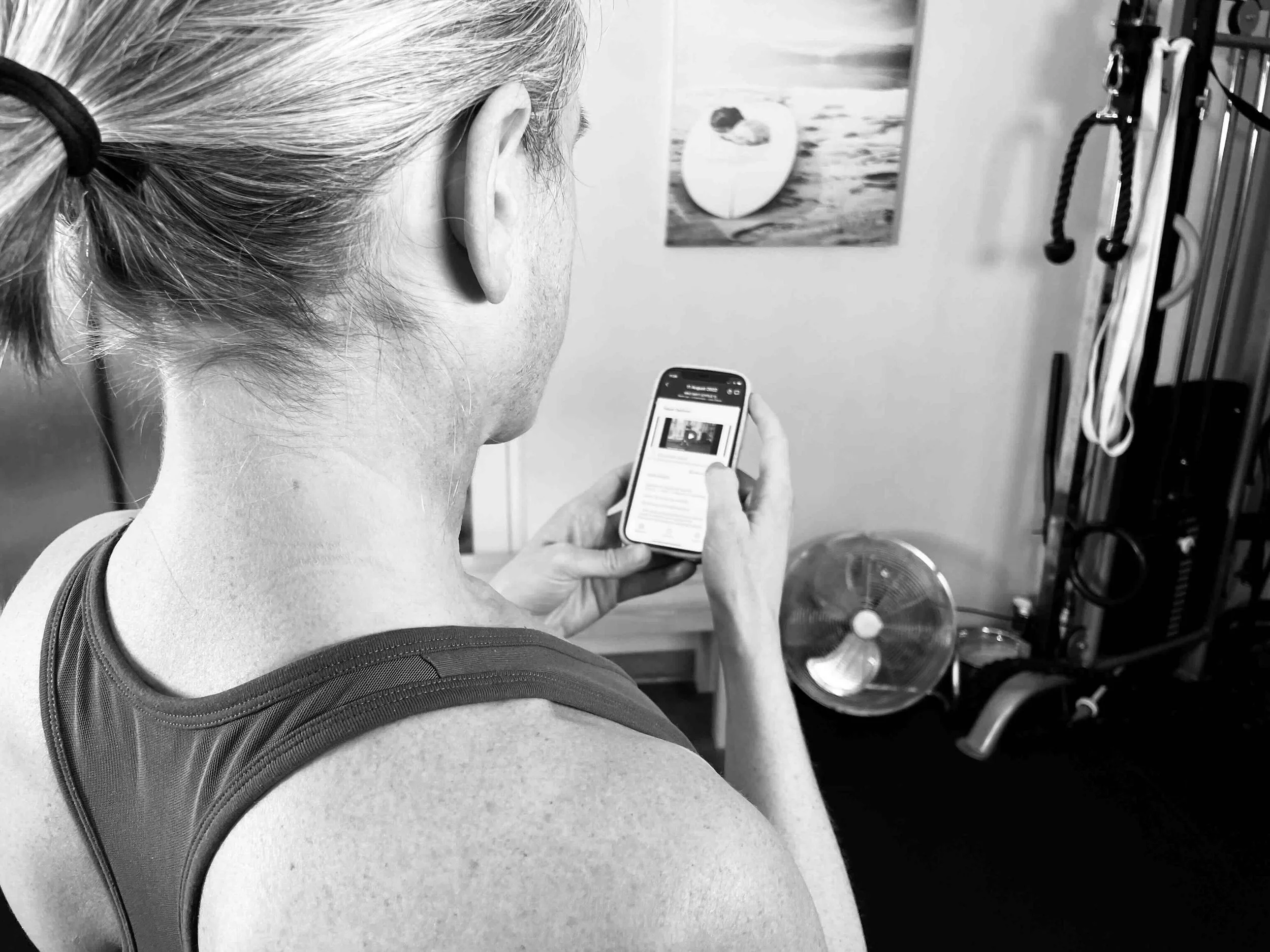So I had this conversation with one of my clients the other day who’s been training with me for a few weeks…she’d been away on holiday in Thailand for a couple of weeks and said how her knees felt great while she was away doing a lot of walking around (before she started training with me her knees would have caused her pain from the walking).
The last few days of her holiday involved chilling in a hammock reading, with less movement and she noticed her knees and back were more achey then.
She’d been suffering from knee pain (arthritis) and back pain before seeing me in the studio and had noticed after a few sessions with me how much less achey and painful she felt.
She’s one of many clients who always notice a reduction in their pain levels when they’re doing a regular strength workout practice (even if it’s only bodyweight movements).
Another client who started moving to reduce her pain.
Building muscle and strength is the best thing for your joints and overall longevity. And the good news is:
you don’t have to “lift heavy”
it’s not as complicated as a lot of social media make it seem
you don’t need any past experience with strength training
starting with just your body weight is highly recommended
And if you’re looking for a guided kickstart to your strength journey, my 4-week Functional Strength Challenge is the perfect place to start…🤗
This challenge is all about building the kind of strength that makes everyday life easier, your joints feel better, and your body feel like yours again.
It’s designed for women who are:
Sick of cookie-cutter workouts
Over wasting time on stuff that doesn’t work
Sick of signing up to Challenges that don't suit your needs or capability level
Ready to feel strong, capable, and supported
Whether you’ve trained before or you’re starting fresh, I’ve got you covered. You’ll get a well thought out strength program, real-time support, and no fluff — just workouts that work, in a way that fits into your life.
And trust me,I know they work because I follow my strength program myself. 💪🏽
🗓 These Challenges run throughout the year and the next one starts 29th September 2025 (Preview Week 22nd September).
✅ 4 weeks of progressive, functional strength training
📲 Delivered via an app — do it anywhere, anytime
🫶 Accountability + guidance from me every step of the way
I know starting can feel like the hardest part, but you don’t need to be “more ready.” You just need to begin.
👀 See what the Challenge is all about…
If you don’t want to wait until the next Challenge then you can jump into my full strength program anytime…




